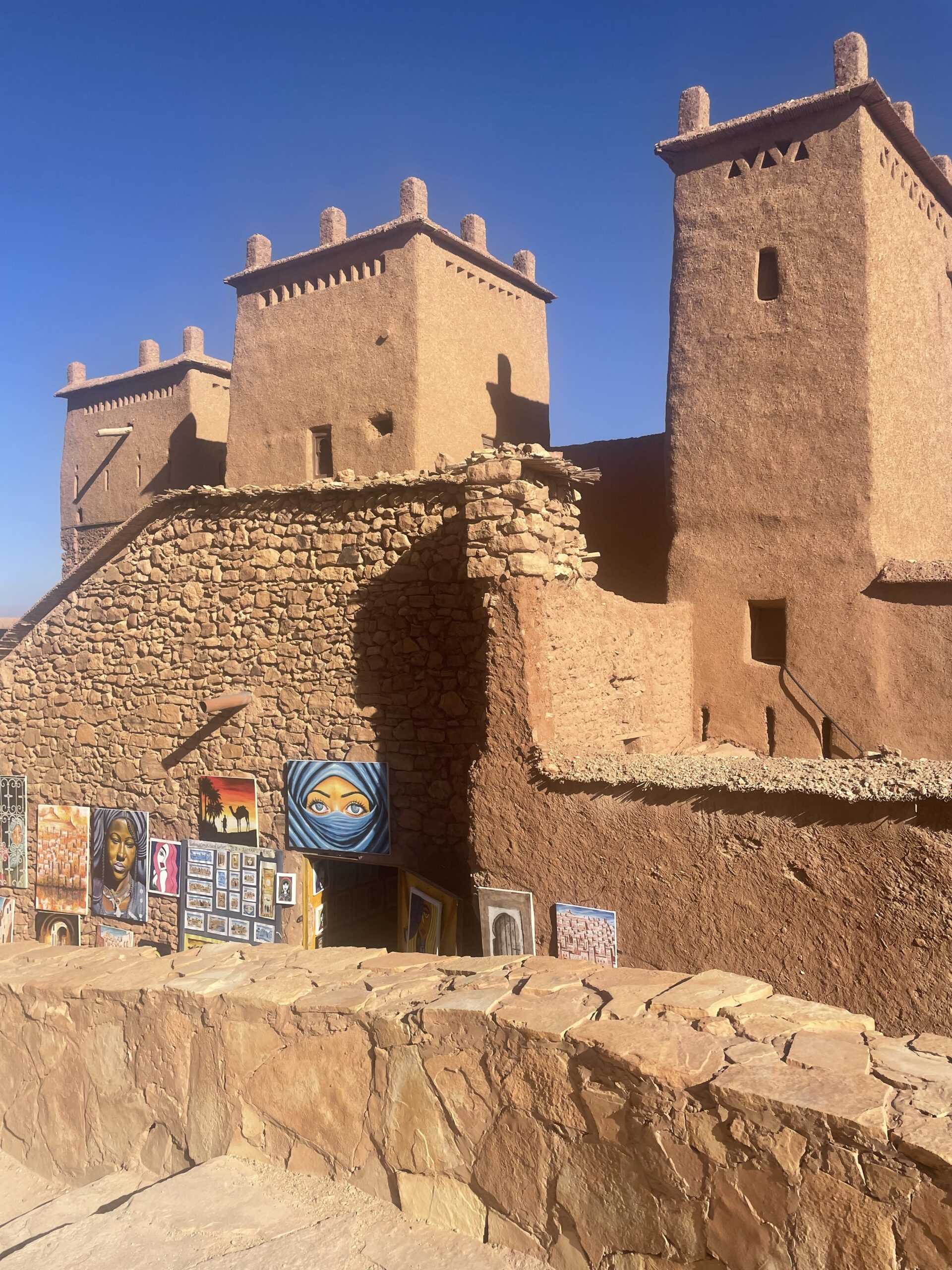
Ksar Aït Ben Haddou- Morocco
(ssalamū ‘lekum) اسلا عليك�
This past week, I had the luxury of having the entire week off of classes. My mom and I had planned a trip together to Marrakech, Morocco a few months ago before I started my study abroad experience during this exact week I was excused from classes. Once the time finally came, it was a great surprise not just to visit Africa for the first time in my life, but also to see my mom after going about three long months of not seeing her in person and only speaking to each other through the phone. I was so thrilled to see her and and give her the biggest hug at the airport. We had an amazing trip around Morocco this past week. Getting to experience the culture and see some of the most exciting sights in Morocco was an unforgettable life experience. On our second day there, we had a driver take us to the Ksar Aït Ben Haddou. It was a four hour drive away from Marrakech, but it was well worth the long journey. We had many pit stops along the way and got to see many different small villages with beautiful sights of the Atlas Mountains. Once we arrived to our destination, we were greeted with a yummy chicken tajin with olives and lemon. After lunch, we had our own tour guide show us around Ksar Aït Ben Haddou. We started off by visiting the mosque and ended up spending the rest of our time there winding up and down the small alleyways. Inside of the mosque there is an area where they can pray five times a day. There is a long bridge connected to the entrance of Ksar Aït Ben Haddou because during the rainy season it fills up with a lot of water. This river water is actually salt water because 32 kilometers away from Ksar Aït Ben Haddou there are salt mines and when the rain water comes down the mountains it passes through these salt mines. During our visit, this area was completely dry and there was no water in sight. Our tour guide said that part of this reason is due to climate change. This is very concerning because the people that live in this area and in the neighboring towns rely on this water to survive and keep their camels and donkeys healthy. There are still 8 families to this day that are from Ksar Aït Ben Haddou but during the nighttime five of these families will cross over to the new town and sleep and spend their nights there. There are three families that still live full time in Ksar Aït Ben Haddou and they have access to houses in the new town but refuse to live there. This village has exhausted ever since the year 1197. Due to the rich history, there have been many Hollywood productions that film movies and series here. They will pay the villagers for access to their land and they also have them as extras in the movies. They grow dates, pomegranates, olives, oranges on their land. This is extremely important because there are times when the river is so high with water that the strong tides do not allow the villagers to cross over to the new town for up to three days. This is why they must have access to their own food. The temperature can reach up to 47-48 degrees Celsius during the warmest days of the year. There is also a cinagoug in Ksar Aït Ben Haddou for the Jews that used to live there, however the last Jewish family left in 1961. The entire village is made out of brick and clay and they use this building method for insulation which allows the inside of the houses to be kept cooler than outside. Depending on how old certain homes are, certain houses have to be renovated ever 2-8 years due to the clay eventually being chipped off over time due to rough weather. They use clay and straw to create their roofs. With all the tourists coming to visit Ksar Aït Ben Haddou each year, the villagers have learned to sell their art to the foreigners. They use green tea, saffron, indigo, and sugar to create the green and blue paint colors and they also use heat from gas tanks to create a dark brown color. The highest point in Ksar Aït Ben Haddou has an altitude of 1331. And the big main gate in Ksar Aït Ben Haddou is actually not original, it was created for a movie called The Julie of the Nile. My favorite part of the tour was when my mom and I had the opportunity to visit his aunts home. Our tour guide actually has an aunt that still lives in Ksar Aït Ben Haddou, and during the night time she crosses over to the new town. She creates rugs for a living and we had the amazing opportunity to have a complete tour of her home. She has also placed a bowl of water outside her front door for wild dogs and other animals to have access to clean water. We also got to learn how they crush grains in order to make bread dough. Our entire trip to was extremely memorable and I am extremely grateful to be able to visit such a diverse place at such a young age. In my opinion, visiting places like Morocco in person is the best way to learn about culture and I learn much more than any history class could ever teach me.

